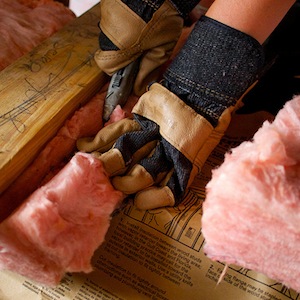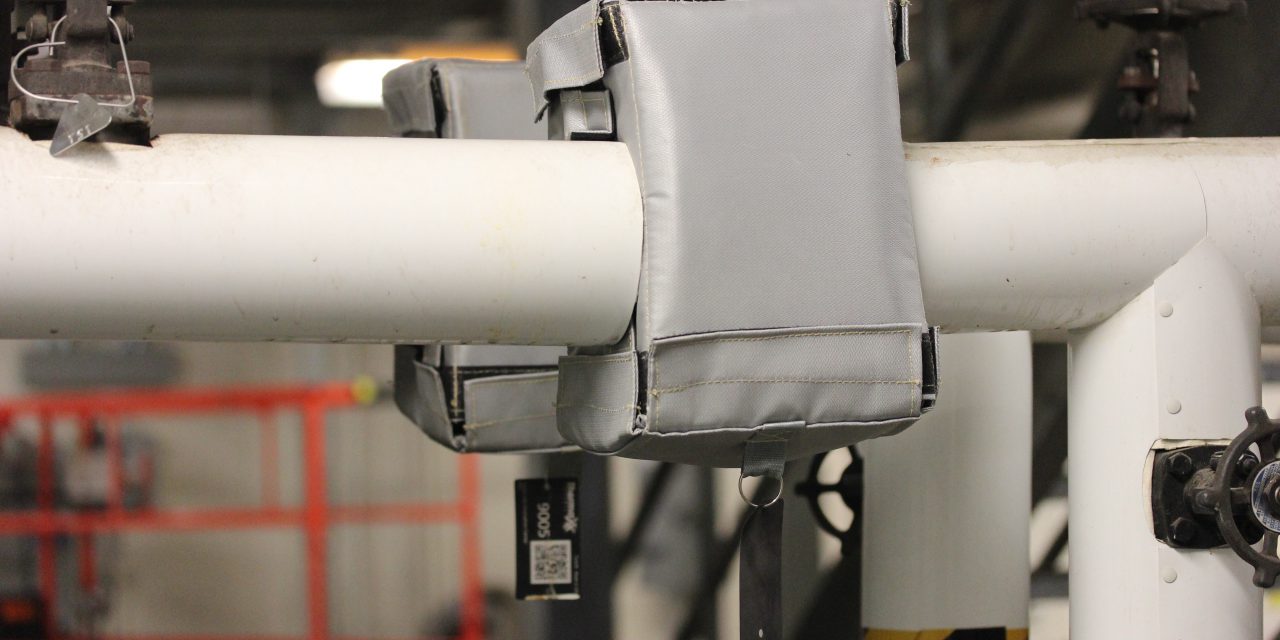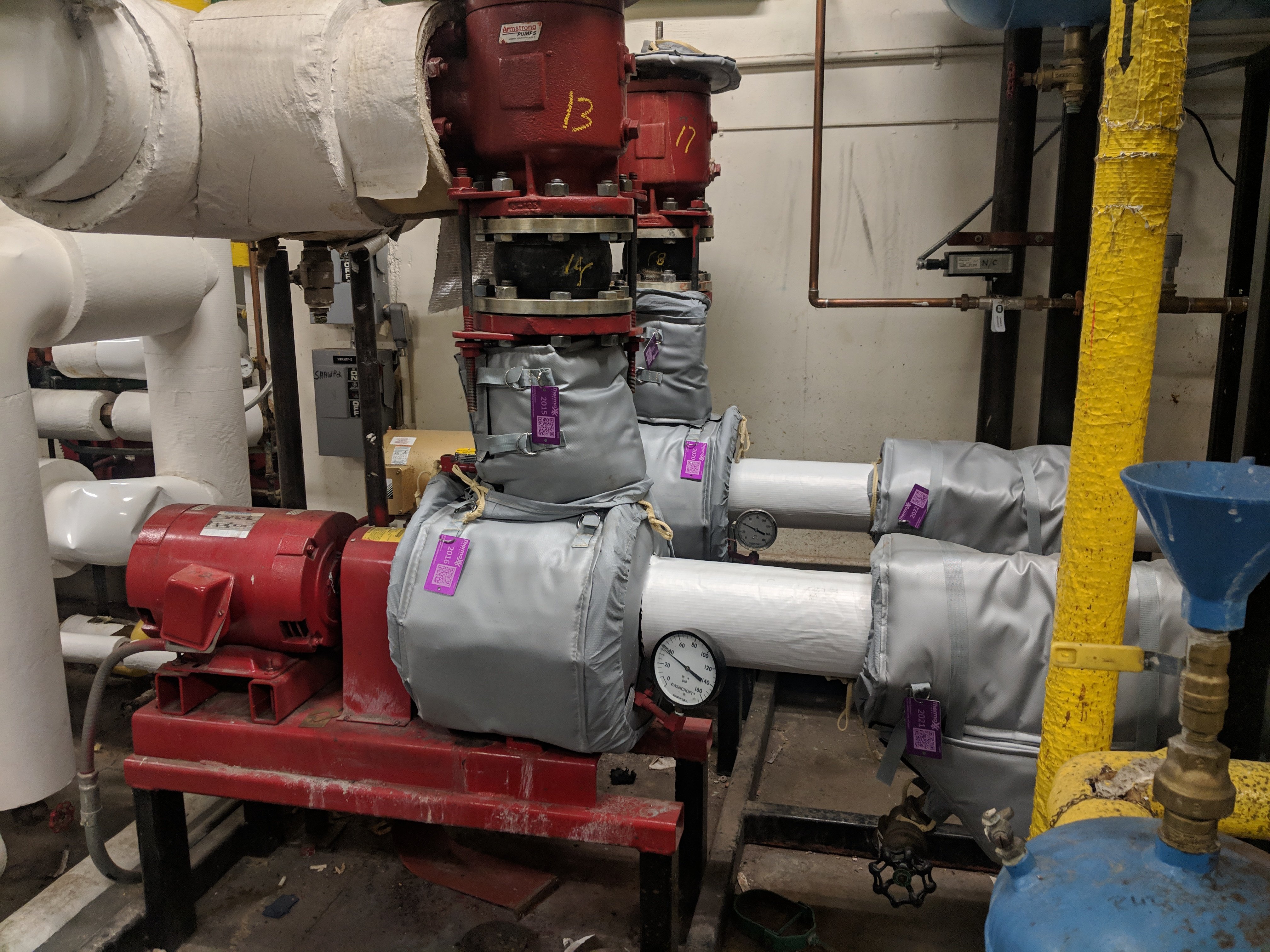C Factor, R Factor, and K Factor Insulation Ratings
 Insulation terms can be quite confusing to anyone outside the industry. If you’ve ever bought insulation for your house, you know that insulation with a high R factor is better. But what, exactly, does that mean? Did you know that the R Factor depends on other factors?
Insulation terms can be quite confusing to anyone outside the industry. If you’ve ever bought insulation for your house, you know that insulation with a high R factor is better. But what, exactly, does that mean? Did you know that the R Factor depends on other factors?
When it comes to buying more specific insulation products, like removable insulation jackets for hot pipes, understanding the particulars of the three measures of insulation is key. In order to understand the well-known R factor it's important to understand the factors upon which it relies, the K factor and C factor.
- How to Measure Your Thermal Insulation Needs
- K Value Insulation
- C Value Insulation
- R-Value Insulation
- Why Is Thermal Insulation Important?
- Is Your Insulation Effective?
- Learn More About Insulation Ratings at Thermaxx
If you are seeking out the formulas to calculate these factors, check out our R, C & K Factor Formula Conversion Table that lists all the formulas discussed in this article. For more information, read on!
| I Want | ||||
|---|---|---|---|---|
| K Factor | C Factor | R Factor | ||
| I Have | K Factor | C=K-factor/in. of thickness | R= in. of thickness/K-factor | |
| C Factor | K=C-factor in. of thickness | R=1/C-factor | ||
| R Factor | K=in. of thickness / R-factor | C-1/R-factor | ||
| None of the Above |
K=BTU-in / hr - ft² - °F | C=BTU/(hr · ft · °F) | R=h · ft² · °F/BTU | |
How to Measure Your Thermal Insulation Needs
Measuring your thermal insulation needs helps you understand what type of jackets you need for your applications. The goal of thermal insulation is to reduce the exchange of heat between a component's surface and the external environment — or the surface of another piece of equipment.
To start, you need to measure a material's thermal conductivity. In general, you'll want to look for something that has low thermal conductivity because those materials have a better ability to insulate. While this is a good starting point, it doesn't automatically give you the right answer every time.
Instead, you'll need to look at several other equations, including K, C, and R factors. These measurements will help you determine the insulation thickness and type of insulation required for a given application.
Insulation K Values
What Is the K Value of Insulation?
The K factor of insulation represents the material's thermal conductivity or ability to conduct heat. Usually, insulation materials have a K Factor of less than one. The lower the K factor, the better the insulation. The textbook definition of the K factor is “The time rate of steady heat flow through a unit area of homogeneous material induced by a unit temperature gradient in a direction perpendicular to that unit area.” That’s a mouthful.
Simplified, the K factor is the measure of heat that passes through one square foot of material that is one inch thick in an hour. The K factor will help you determine how well the material will insulate a part to control its heat transmission. When keeping heat contained is paramount, you need to find an insulator with the lowest possible K factor.
How Do I Calculate the K Factor of Insulation?
If the R factor is unknown, the formula to calculate the K factor of insulation is:
K factor = BTU-in / hr - ft2 - °F
or
British Thermal Unit-Inch Per Square Foot Per Hour Per Fahrenheit Degree
If R factor is known, this easier formula can be used to calculate the K factor:
K factor = inches of thickness / R Factor
How is the K Factor of Insulation Reported?
K factors are reported at one or many mean temperatures. The mean temperature is the average of the sum of the hottest and coldest surface temperatures which the insulation material is exposed to.
Put more simply, the testing apparatus that determines the K factor of an insulation material places a sample of the material between two plates, hot and cold, and the average of the surface temperatures of those two plates equals the mean temperature. Here is an example of an insulation material's K factor report:
 via Nomaco Insulation[/caption]
via Nomaco Insulation[/caption]
Notice that as the mean temperature rises, so does the K factor. It's important to observe the K factor & mean temperature when comparing insulation.
The C Factor of Insulation
What is the C Factor of Insulation?
The C factor stands for Thermal Conductance Factor. The C factor, like the K factor, is a rate of heat transfer through a material, though this measurement is based on transfer being induced by a temperature difference between different surfaces. Unlike K values, C values are dependent on the material's thickness. The lower the C factor, the better the insulating properties of the material. It is the quantity of heat that passes through a foot of insulation material.
The C factor is dependent upon the thickness of the insulation. The thicker the insulation is, the lower the C factor will be and thus the better the material will be at insulating. This is one of the main differences between the K factor and C factor, because generally the thickness of an insulation material will not affect its K factor.
How Do I Calculate the C Factor of Insulation?
If the K factor is unknown, the formula to calculate the C factor of insulation is:
BTU/(hr·ft⋅°F)
or
Btus/hour per square foot per degree F of temperature difference
If the K factor is known, this easier formula can be used:
C factor = K factor / inches of thickness
The R Factor of Insulation
What Does the R Factor Mean in Insulation?

The R factor pulls together all of the information of the other factors and makes it easy to judge the effectiveness of insulating material. The R factor of insulation can be found most easily of the insulation factors discussed, and it is the most popular indicator of a material's insulator properties. Generally, it is listed on an insulation material's label. The R factor stands for thermal resistance. Higher R-Factor insulation will outperform materials with a lower number.
The textbook definition for R Factor is: the quantity determined by the temperature difference, at steady state, between two defined surfaces of a material or construction that induces a unit heat flow through a unit area. Aren't textbooks supposed to be helpful?
To simplify, the R factor is a variable value that measures the ability of a material to block heat rather than radiate it. The variable is the C factor, which is dependent upon the thickness of the material. It is the opposition to the flow of heat energy.
How Do I Calculate the R Factor of Insulation?
There are a few formulas to calculate the R factor of insulation, depending on if your K factor and C factor are known. If they are unknown, you can use this formula:
h·ft²·°F/Btu
or
degrees F times square feet of area times hours of time per Btus of heat flow
If your K factor and C factor are known, you can use these formulas which may be easier to use:
R-factor = 1 / C-factoror
R-factor = thickness in inches / K-factor
Keep in mind that these factors are specific to the materials being measured. Understanding the ins and outs of the factors that help describe how effective insulation material is will go a long way to helping make the buying process easier.
Why Is Thermal Insulation Important?
Thermal insulation is a crucial part of maintaining your equipment and its various components. Using thermal insulation blankets provides several advantages, making these tools an excellent option when you need an easily implemented solution for heat management. Benefits of thermal insulation blankets include:
- Maximizing therm savings: Your equipment and components will be subject to minimal heat escape when you use thermal insulation, meaning you will save time and energy and get the most out of them.
- Reducing workplace injuries: Insulation acts as a barrier between hot surfaces and your employees, helping prevent accidental contact and keeping your crew safe throughout the workday.
- Improving room comfort: Since covering pipes and other components with insulation keeps heat inside, it also helps you maintain a more comfortable environment in your facility and lower your utility bills.
- Preventing corrosion under insulation (CUI): Many insulation jackets have built-in water drainage solutions, meaning you can expect minimal CUI or water damage to the components and the area around them.
How to Tell If Your Insulation Is Effective
Your insulation needs to be effective in order to maximize each of the benefits outlined above. Take a look at your facility's energy bills — have they decreased since you added thermal insulation to your components? If so, your insulation is having a clear impact. With heat management solutions, it takes less energy to heat or cool the air and the contents of the pipes, helping you save on utility expenses.
Another thing to note would be the ambient room temperature where the equipment is located. If the temperature stays where you want it to be, your pipes or components are likely insulated well.
Learn More About Insulation Ratings and Materials Here at Thermaxx
If you need thermal insulation for any component in your facility, the Thermaxx team is here to help. We make customizable insulation jackets that you can easily remove and replace whenever you need to access your equipment or infrastructure. Our products serve many industries, including municipalities, universities, schools, hospitals, and commercial or industrial companies.
Learn more about how we can help solve your unique insulation needs by contacting us today!
Related Posts & Helpful Resources:

Thermaxx Jackets
Thermaxx Jackets was founded over 25 years ago with a single purpose: to help our clients save energy with removable insulation blankets when traditional stay-in-place insulation is not practical. Our dedication to this purpose has resulted in a long list of customers who have saved money thanks to Thermaxx Jackets! Combining expertise in heat loss, wireless monitoring, insulation design, and several other disciplines, we’ve become the #1 provider and fabricator of removable insulation jackets and covers. The Thermaxx Sales and Service teams are experienced and trained to provide clients with the most timely and cost-effective solution.
Categories
- removable insulation
- thermaxx jackets
- energy savings
- savings
- energy efficiency
- safety
- pipe insulation
- energy
- case study
- insulation materials
- thermal insulation
- heat loss survey
- heat loss
- energy loss
- hot insulation
- fiberglass
- installation
- steam
- New York
- custom insulation
- NYC Case Study
- boiler
- university
- Connecticut
- reusable insulation









